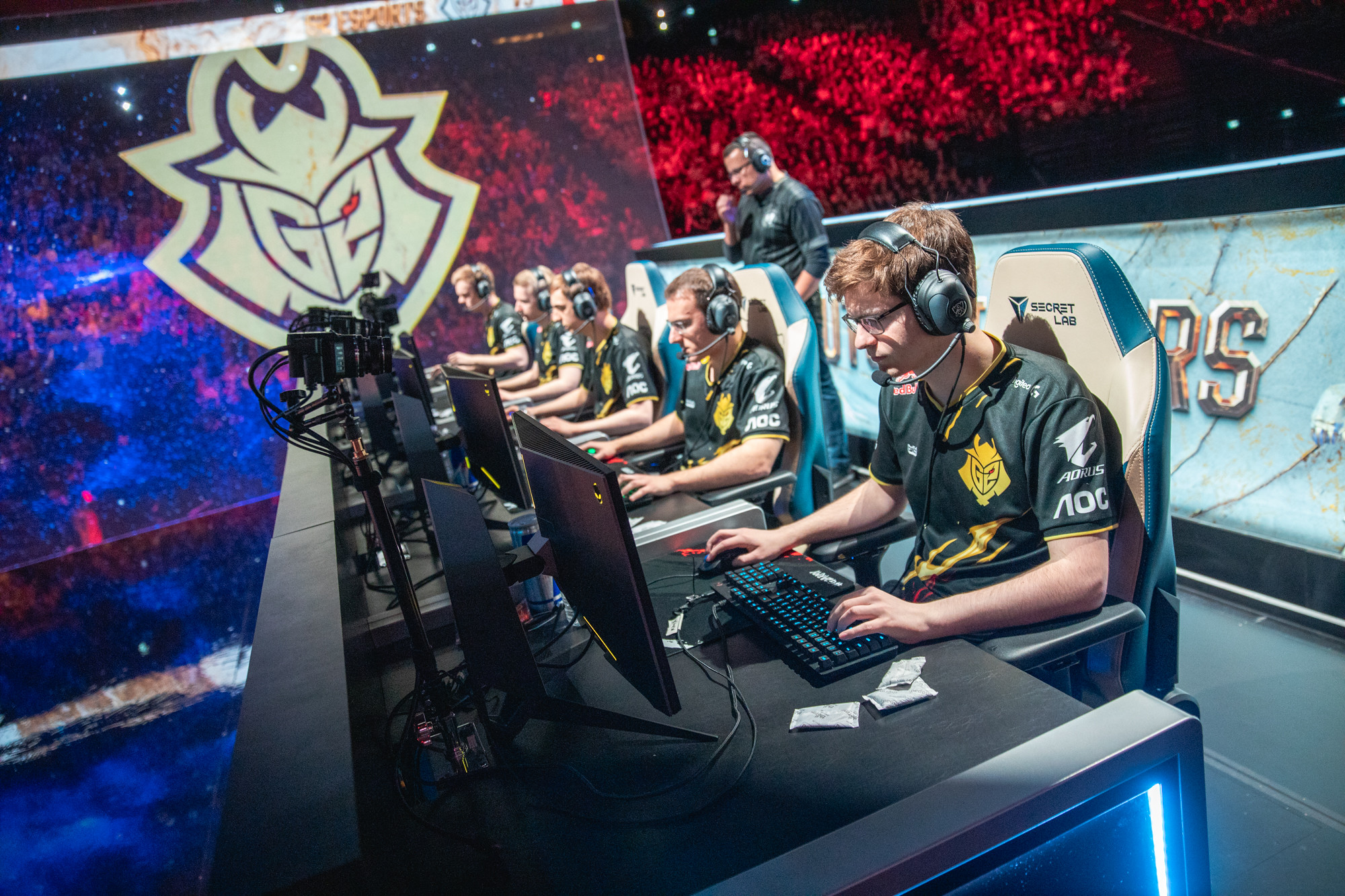The recent Esports Venue Summit hosted an in-depth panel discussion on the critical importance of broadcast technology to reach a global audience and help unlock both commercial revenue through brand allegiance between viewers and teams and additional revenue from media broadcast partners.
The essential steps needed to ensure teams can deliver the highest production values when creating and sharing live esports content were also examined, including the central role of connectivity. Robust network infrastructure and new digital workflows are required to aid esports producers in reaching their ever-growing audiences.
Esports events have seen a colossal boom with live audiences attending sports and event arenas around the world in the last few years. The biggest games have seen packed venues watching the world’s best gamers take part in live grand finals.
Gaming companies have come to rely on the ticket sales for these events, and have also come to depend on technology and broadcast partners as they look to maximize engagement both for those passionate fans in the venue but also the millions of gamers watching at home on streaming platforms.
From the “traditional” broadcast perspective, live production technology vendors have worked hard to understand the unique requirements of major esports events and develop tools that help tell the game stories and also aid the instant interactivity required by an audience that is highly motivated by social media engagement.
“The exciting thing about esports is that it’s just limitless; we haven’t even scratched the surface yet.”
CAMERON REED, ROSS VIDEO
How can the gaming companies and broadcast providers learn from each other, and figure out the next steps forward? This was at the core of the session discussion at the recent Esports Venue Summit, produced by PanStadia & Arena Management and sponsored by Ross Video.
The panel was moderated by Martin Omes, Operations Coordinator at Gamers Outreach Foundation and the line-up of speakers comprised James Dean, Managing Director ESL UK; Mo Goyal, Director International Business Development, Live Media Solutions at Evertz; Alex McBride, Global Head of Esports at EGL TV; Cameron Reed, Esports Business Development Manager at Ross Video; and Ursula Romero, Managing Director of International Sports Broadcasting (ISB).
“It’s wonderful to see the acceleration of the industry,” said James Dean. “When we started out broadcasting in the UK for the very first time it was literally a cobbled-together PC with a rubbishy capture card and some XSplit software and we were serving 20,000 concurrent viewers at the time.
“It’s incredible to think how it has grown, to where by the end of this year we’ll be looking at probably an audience of a billion people across the industry — and the way that esports has continued to innovate and adapt to push the boundaries is probably one of the most exciting things.”

Moderator Martin Omes asked Cameron Reed and Mo Goyal to talk the audience through what kind of technology systems it takes to produce and broadcast a large esports event these days.
“It’s very similar to what you would already see in a sports venue or in a sports venue truck,” said Reed. “You’re going to see a lot of familiar things. You’ll have a central video router to connect all your signals. It’s going to have a video switcher, replay servers, a character generator and a lot of glue to connect those devices.
“The main thing that makes esports stand out from a more traditional sports broadcast workflow is the observer room. These are effectively the in-game camera people. So, rather than taking signals out of a bunch of different cameras, now we’re taking signals out of computers. And so we require a little more glue to convert those signals into either an IP or baseband workflow that the rest of our equipment can work with.
“But for the most part you will see a similar set-up to a normal sports broadcast workflow. At Ross Video we’ve been successful in bringing that broadcast equipment into the venue.
“In a more traditional workflow your venue solution would not necessarily be broadcast equipment. You would have a production control room for things like your instant replays and a couple of stats graphics here and there — but then your LED venue control, for all of the different screens in the arena in a traditional workflow, was totally separate from the control room.
“What we’ve been able to do, with products like Xpression Tessera and switchers like Carbonite Mosaic, is unify that into a single simple-to-use workflow that’s also scalable per the complexity of your event. That can really elevate the production values in the arena,” said Reed.
“Yes you’ve typically got the complexity of how many camera feeds you have to worry about and now the number of computer feeds as well,” agreed Moyal. “Two levels of production — the observer room as well as the main production, whether feeding the venue or feeding the distribution channels such as a Twitch streaming platform.
“And now with the pandemic you’ve got the growing requirement to connect players more reliably from their homes into a central location. So now you’re looking at a more distributed architecture, rather than everyone coming together in one venue.
“So how do you reliably connect the venue and the home, to produce that high quality event? There is a level of complexity that continues to be there; however we’re striving to make that simpler. How quickly can we morph our system for different types of gaming event? I know the industry is really focused on trying to make that easier — especially in the area of trying to bring in those remote feeds,” said Goyal.

From a broadcast production perspective, Orme asked Ursula Romero to outline what kinds of tools and techniques can be brought to the typical esports venue. “Depending on the budget of course, there are usually big screens in the venue to get spectators involved. You can show people in the crowd to get people excited and provide more interaction. Having spectators at home interacting is something that’s compelling in esports, and it would be amazing to bring that over to traditional sports.
“But you need to get spectators as close as possible to the action, with super slo-mos and tight shots of the expressions and endurance of the athletes. A lot of stadiums now have incredible technology so those in the venue can also watch what the viewer is seeing at home,” she said.
The Instant Interactivity of Esports Events
The moderator asked James Dean and Alex McBride to elaborate on the role of the venue production team at a major physical esports finals event to generate and maintain engagement and interaction.
“It’s funny, when you’re sitting in a venue watching an esports event,” said Dean, “what you’re focused on is a bunch of avatars running around in a virtual world! And then you have all the statistics coming through and you can start to understand the performance of individual players and you can associate that with the actual human sitting in front of you,” he said.

“What we’re trying to do is create some sort of familiarity, or compassion, between the fan and the individual. But the beauty is that we’re talking about a very young audience here, relatively speaking, in a world of memes and a lot of humor on the internet — but also extracting out these small snippets of personality that people really do hang on to,” said Dean.
“If you look at stories emerging from players, it can be based on the tiniest snippet of information about them. It’s wonderful to see how that creates a snowball effect of fans reacting.”
“It’s not just the players: The tournament actually becomes it’s own personality based on where it’s based, the venue and the sponsors in that venue. We’ve had situations where the entire stadium starts chanting a sponsor’s name because the logo has come up and they start letting off balloons or something like that,” said Dean.
“You start to build out an overall complete personality of an event in its entirety. And every single time, one of the most active teams we have is our social media team, who, in effect, are constantly extracting these live bits of narrative and embellishing them on all the different platforms we’re broadcasting on, from Twitch and the live side of things to the VoDs and socials, to get that instant reaction and response from the audience.”
“It’s a wonderful environment, where the production on an esports event is on fire because everyone is collaborating. They are all passing digital information or assets between them and it becomes this big exciting melting pot of live production. And we see massive instant effects: During an event you might see a handful of social media posts that go completely viral — it’s incredible,” he said.
“Not being in the venue gives you that feeling you’ve missed out on something — but now knowing what you’ve missed out on,” added McBride. “You think ‘I’ve got to be there next time.’
“We’ve also seen in the drone space how the virtual drone racing and physical drone racing are basically one and the same. We’ve seen Nintendo recently build out an augmented reality racing game where it’s actually a physical remote-controlled car with an augmented racing track. These things are going to merge, and it’s exactly what the audience is going to desire. I have a three-year-old, and he is definitely going to be after that sort of thing.”
JAMES DEAN, MANAGING DIRECTOR, ESL UK
“The thing about gamers and esports fans is they are so passionate and so protective of the industry as a whole. Everyone feels part of the industry, even if they’re just a watcher commenting on social media.
“This can work positively and can work negatively. If you do something wrong, you’ll find about it pretty quickly; but if you do something right in terms of your event or your campaign, you’ll start to bring your community along, and they essentially act as a pillar of your market. You need to bring everyone in as part of the journey,” said McBride.
Physical and Virtual Production Trends, and the Role of the Cloud
Delving further into the narrative of esports events, the panel discussed how production teams can use virtual moments to generate spikes of response among the engaged audience. This led to an extended discussion of a possible confluence of real and simulated sporting events.
We’ve seen many federations and leagues around the world create highly successful simulated versions of their physical events — in basketball, motor racing, soccer and many other examples — but what if those leagues took ‘gamification’ one step further and started to virtualize aspects of their physical sports? For a younger generation brought up in the gaming environment, there is no difficulty in blurring the line between physical and virtual: In fact, it’s something they could quite possibly come to expect.
“Those wow moments vary from game to game, just as they do in traditional sports,” said Reed. “In baseball, it’s the home run or the stolen base. In football, it’s the touchdown or the interception. In League of Legends, it can be a dragon kill or a baron drop — or better yet, a baron steal. In Rocket League, it’s a goal. In Starcraft 2, it’s a Proxy Barracks.
“From the technology standpoint, what is especially cool about esports is that at Ross, we have tools that can connect to live data sources. So we can automate all of these amazing looks that all of these esports producers can cook up.
“The video game knows exactly when the cloud dragon has gone down. The game knows that and the game can tell Xpression ‘this just happened,’ so you don’t need a team of statisticians on hand explaining all that any more. The graphic will always be right on time.
“Then imagine you’ve got a full screen takeover of a cloud dragon flying across every one of your screens — or whatever that wow moment is that you want to create. The exciting thing about esports is that it’s just limitless; we haven’t even scratched the surface yet.
“It’s a great engagement — the idea of having a simulation of a traditional sport and lowering the barrier of entry, where you can be on the football field,” said Dean. “I would like to go one step further with this. I think that as the younger audience grows up and comes to expect this level of interactivity — where pretty much the entire global population will be a gamer at some point — what we might see is that the traditional sport might get more gamified.”
“What we’ve been able to do with products like Xpression Tessera and switchers like Carbonite Mosaic is unify that into a single simple-to-use workflow that’s also scalable per the complexity of your event. That can really elevate the production values in the arena.”
CAMERON REED, ROSS VIDEO
“We’re seeing games becoming more physical to some degree, especially in the VR realm. If you watch a VR tournament, it’s fascinating as it does rely a huge amount on the physical motion of those players,” said Dean.
“But there’s no reason why we couldn’t start raising the metrics within a football match, where there’s some level of virtual ambition of goals as well as physically kicking a football around the field.
“Imagine expanding out to an idea that the ball is now on fire and has to get past a massive dragon before it goes through a flaming hoop. Who knows! I’m probably going a bit too far now… but I really do think that the two [traditional and esports] need to consistently come together.
“We’ve also seen in the drone space how the virtual drone racing and physical drone racing are basically one and the same. We’ve seen Nintendo recently build out an augmented reality racing game where it’s actually a physical remote-controlled car with an augmented racing track.
“These things are going to merge, and it’s exactly what the audience is going to desire. I have a three-year-old, and he is definitely going to be after that sort of thing,” said Dean.
“Not being in the venue gives you that feeling you’ve missed out on something — but now knowing what you’ve missed out on — you think, ‘I’ve got to be there next time.’”
ALEX MCBRIDE, GLOBAL HEAD OF ESPORTS, EGL TV
“And I think you’re seeing that in traditional sports with things like the 4D cameras,” said Goyal. “Technology companies are trying to figure out how to create that 360-degree view of a player doing something. If I want to see Lebron James doing a dunk, I want to see it from every possible angle — that’s all coming from the gaming perspective.
“I agree that the gaming industry is coming into the regular sports space because you have that merging of the audience. That younger audience watches sports from a gaming perspective and they want to be able to see sports from that perspective.
“So you have a lot of production companies taking notice of what’s happening in the gaming industry and thinking ‘hey, how do I bring that to my sport and enhance that experience to make it unique to draw the fans?’ Plus, you have strong partnerships now between the sports leagues and gaming entities to bridge that, with the personalities within the physical sports like the NBA pushing the NBA 2K simulated environment to increase fan engagement,” said Goyal.
“What’s been interesting to see over the past six to eight months as companies look to do these events is a shift to cloud sources. So you’re looking at using public cloud to do the whole production, instead of rolling physical gear into the venue.
“That does introduce another level of support and knowledge. How do you leverage a public service running on an Amazon or Microsoft Azure or Google Cloud for your remote production, where your operators are connected from various places, as well as the event participants from their homes and being able to stream it out?
“This introduces another level of knowledge and understanding of how to utilize cloud resources and the security component around it. That’s really what been happening over the past six to eight months — the movement away from the controlled environment of a physical venue to something that’s going to be more in the public cloud,” he said.


